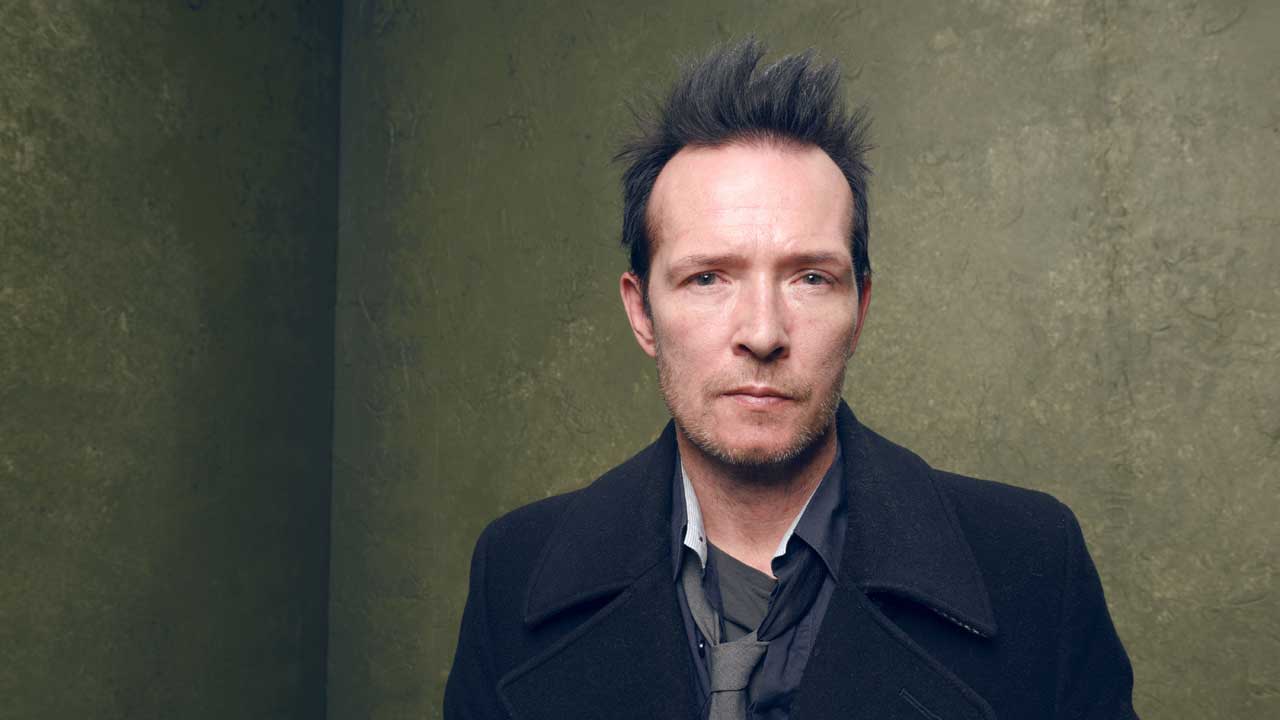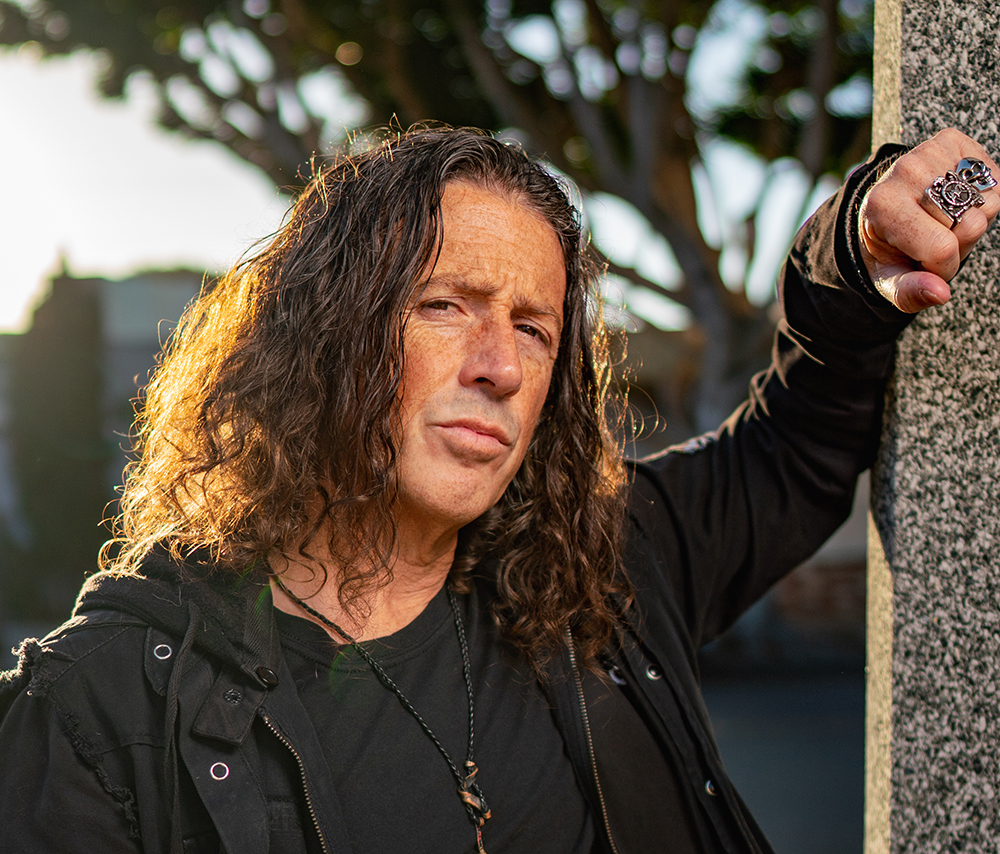On the morning of May 16, 2015 an army of angry grey clouds gathered above Mapfre Stadium in Columbus, Ohio, and by lunchtime lashing rain was pounding the shit out of the main stage of the Rock On The Range festival. Then, just like that, the rains ebbed, and out strode Scott Weiland And The Wildabouts to a magnificent roar of approval.
But as soon as Weiland opened his mouth it was clear that something wasn’t right. Sporting mirrored Jim Beam sunglasses, Weiland stumbled through the songs with spiritless, atonal apathy. A smattering of boos greeted him.
It wasn’t the first time this had happened. Only a few weeks earlier, audience-shot footage from a Wildabouts show in Texas captured a similar tableau – a spaced-out Weiland delivering a slurred, barely recognisable version of Vaseline, a song by his former band Stone Temple Pilots.
The footage provoked an avalanche of speculation that he had fallen off the wagon. He responded by claiming 13 years of sobriety, but there was little doubt that he had relapsed – again.
After his set, the singer turned up in the media tent for a radio interview. Sitting next to his wife Jamie, I watched the cringeworthy exchange, with Weiland speaking in a flat, monotone drone, peering at some vague point in the distance with the thousand-yard stare of someone who has been to hell and hasn’t quite made it back yet. The signs looked all too familiar. Despite three decades of addiction, arrests, rehabs and jail, it seemed Scott Weiland had still not hit rock bottom.
San Diego is a tangle of thorny contrasts largely obscured by a reputation as one of North America’s most chilled-out, sun-drenched beach destinations. Beyond the epic surf, ‘America’s Finest City’ is renowned as much for its stodgy, Reagan-era conservatism and pervasive military culture as for its bleach-blond surfers and breezy, New Age spirituality.
In the early 90s, the music industry decided that San Diego was the next Seattle, and record labels dispatched legions of silver-tongued A&R people with fat cheque books in the hope of signing the next Pearl Jam or Nirvana.
Mighty Joe Young were one of the bands they were most interested in. Formed in the late 80s by Weiland, DeLeo brothers Dean (guitar) and Robert (bass) and drummer Eric Kretz, they had emerged as heavyweights on the San Diego scene. Even then, as Mighty Joe Young battled for opening slots in small clubs, Weiland had adopted the bulletproof swagger of an established superstar, drawing generously from his worship of Bowie and Bolan to create a stylish and thoroughly modern new rock star. Gifted with muscular pipes, swivelling hips and a commanding presence on even the tiniest of stages, by the early 90s, Weiland was ready for his close-up.
“In 1992, San Diego was the flavour of the month,” recalls Tim Mays, owner of The Casbah, San Diego’s iconic waystation for heat-seeking new rock bands. In the early 90s The Casbah’s tiny stage showcased bands such as Nirvana and the Smashing Pumpkins, as well as local bands including Mighty Joe Young. “Anything from San Diego was getting attention,” Mays says. “Record labels were coming down and wining and dining bands, setting up showcases, all sorts of crazy stuff. There was a feeding frenzy going on.”
Mighty Joe Young fell into a tight friendship with fellow San Diego band Honey Glaze. “My parents would throw barbeques and the Mighty Joe Young guys came over a bunch of times,” recalls Honey Glaze bassist Josh Higgins. “I remember my mom being rubbed the wrong way a little bit by Weiland. I told her: ‘You just need to get to know him, mom. He’s an awesome guy.’ He just had this confidence. Looking back, it was like he was born to be a musician at that level.”
As with many extroverts, Weiland’s icy-cool bravado masked an array of insecurities. Haunted by anxiety and depression as a child, Weiland also suffered from a bipolar disorder that remained undiagnosed until he was 34. But the first signs of his addiction developed before he was even old enough to drive.
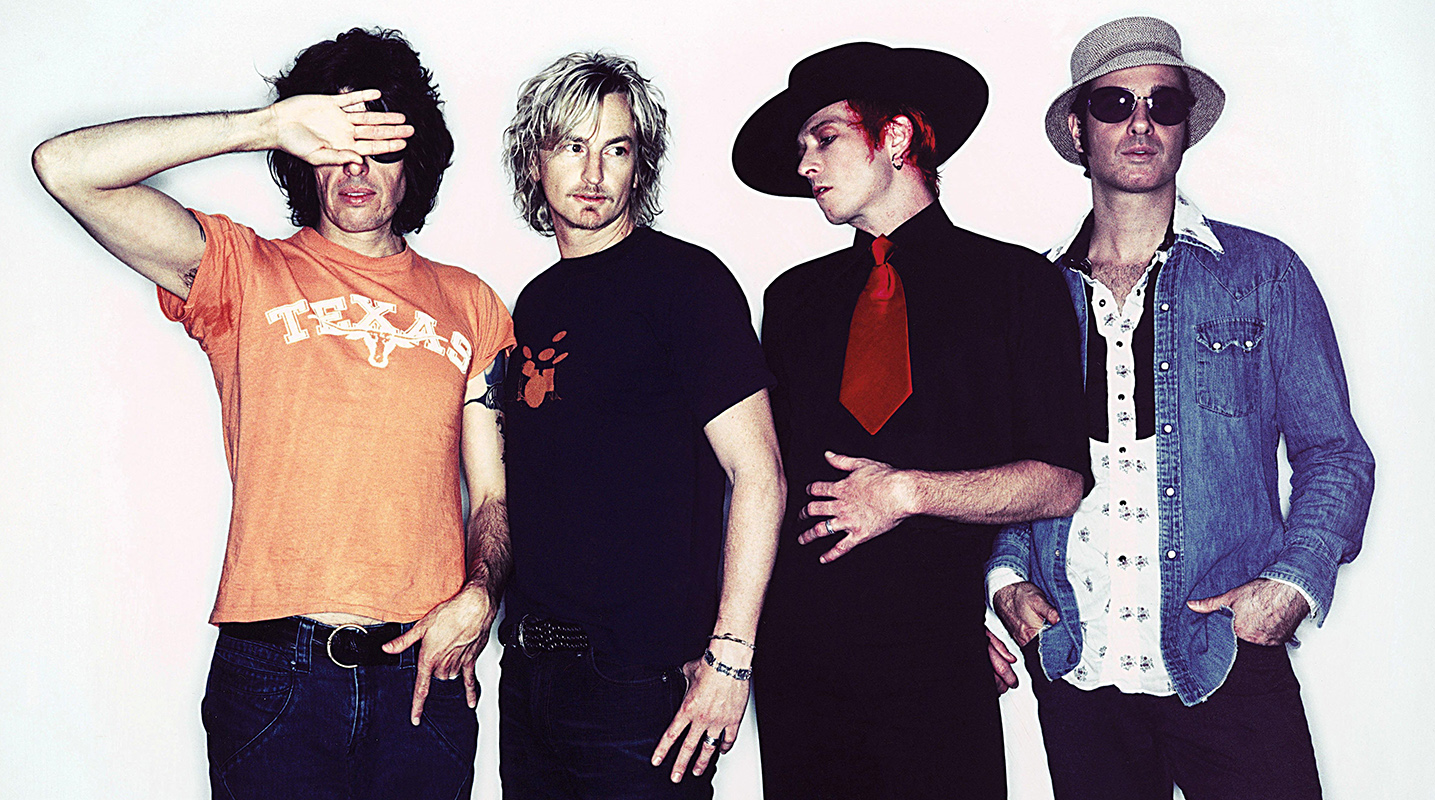
In the book Alcoholics Anonymous, the volume that describes both the nature of alcoholism and AA’s 12-step program of recovery, a chapter titled The Doctor’s Opinion outlines the disease concept of alcoholism: a two-symptom condition characterised by both a physical craving for alcohol (once an alcoholic begins drinking, it produces an intense craving for more), and a mental obsession – even when sober, the alcoholic is obsessed with his next drink. As early as high school, Weiland exhibited both symptoms.
“We’d get fucked up on Friday and Saturday, and then we’d make it all the way till the next Friday before doing it again,” he told Esquire magazine in 2005. “But as time went on it became a fixation. An obsession. All you could think about the whole week was getting to Friday again so you could party. That was all I ever thought about.”
Still living at home, Weiland’s heroic bouts of binge drinking soon paved the way for cocaine and weed. After finding little white bundles of blow in his bedroom, his parents packed him off to his first rehab. He was 16.
In the ensuing years, Weiland continued to self-medicate with alcohol, coke and weed, finding only fleeting respite from a corrosive sense of self-loathing. Mighty Joe Young changed their name to Stone Temple Pilots, and on April Fool’s Day 1992 signed a lucrative deal with Atlantic Records, giving Weiland broad exposure to an addict’s two biggest enemies: money and access to drugs.
On the last stop of an STP co-headlining tour with the Butthole Surfers in 1993, in a back room of New York City’s Royalton Hotel, Weiland first tried heroin, and in the rhapsodic embrace of this sticky brown talc his demons finally retreated.
“When I tried heroin for the first time,” Weiland recalled in 1998, “it seemed to make all those insecurities just go away. I suddenly felt: ‘Wow, this is how normal people feel on a day-to-day basis.’” Within a year he was spending upwards of $3,000 a week on smack.
It goes without saying that if the drugs didn’t work, people wouldn’t take them. And initially, Weiland found that heroin not only removed his anxiety, but also fed into his carefully cultivated, elegantly wasted rock star persona and inspired a bracing new experimentalism. He attributed much of his creativity during the sessions for Stone Temple Pilots’ second album, Purple, to smack
“Heroin gave me this ability to distance myself from the creative process and thereby gave me the strength and courage to try new things,” he told Classic Rock. “Part of me felt I couldn’t be creative unless I was high.”
At the age of 24, the singer graduated from smoking heroin to injecting the drug. He spoke about his first intravenous shot in flowery spiritual aphorisms. “It’s like what they talk about in Buddhism, that feeling of reaching enlightenment,” he told Esquire.
“They say there’s a golden glow that goes from your fingers all the way through every appendage and into the pit of your stomach. That’s what it felt like to me. Like I’d reached enlightenment. Like a drop of water rejoining the ocean.
”It didn’t take long for Weiland to lose what little control of his habit remained. In 1995, two days out of another rehab, police busted him for possession of heroin and cocaine. After Janina bailed him out, he fled her car at a stop light and disappeared for days while shooting dope with Courtney Love. Stone Temple Pilots scrapped a 1996 tour, claiming that their singer had “become unable to rehearse or appear for these shows due to his dependency on drugs”.
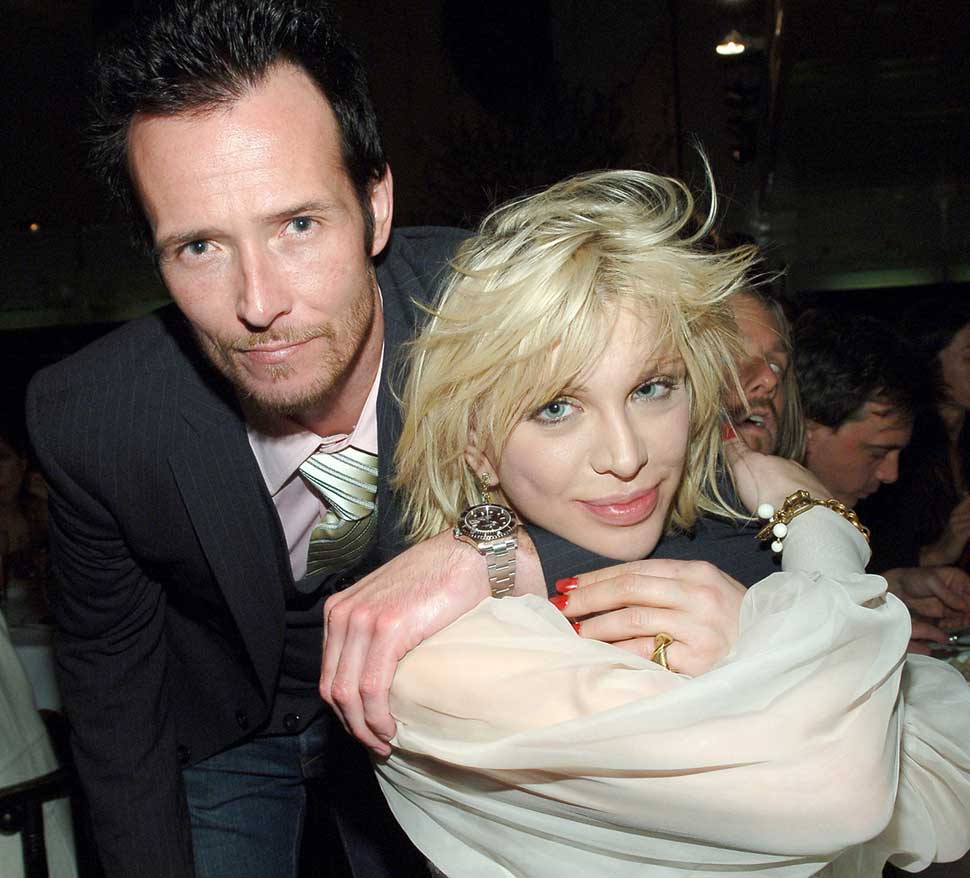
With STP forced into hiatus, Weiland channelled his experiences into his first solo record, 12 Bar Blues, an unsparing examination of his addiction.
But things were getting worse. In 1998, police arrested Weiland copping dope in a New York housing project. A drug-related probation violation landed him five months in jail. Later years would bring more arrests for drink-driving, battery and possession.
His erratic behaviour would also see him parting from both STP (once in 2002 after a druggy backstage blowout with Dean DeLeo, and again in 2013 when the band fired him amid crippling tensions) and Velvet Revolver, who jettisoned Weiland in 2008, citing the singer’s “increasingly erratic on-stage behaviour and personal problems”.
For anyone who has never struggled with drugs, it may seem baffling that someone with Weiland’s money and resources would repeatedly relapse. But addiction specialists would counter that the first time he injected heroin he lost the ability to choose; that unless he found something that gave him the same ease and comfort as drugs, relapse and death were inevitable.
For Scott Weiland, drugs weren’t his problem, but his solution. Take away that solution and you’ve got an emotionally ravaged man, tormented by untreated mental illness, whose every misstep is trotted out into the headlines for ridicule, judgment and scorn. For a few dollars and a needle, he could make it all go away. Weiland himself admitted that the reason behind his chronic relapsing was simple. “I never wanted to quit,” he told Esquire. “I saw narcotics as something I needed in order to function. I believed I was born with this particular chemical deficiency that only opiates could fulfil. My basic thought was: How can all you people want to keep me away from the one medicine that could keep me from blowing my head off?”
He would spend the rest of his life locked in an agonising cycle of relapses, rehabs and brief stretches of sobriety. Sadly, by the beginning of 2015 all signs pointed to a new cycle of relapse.
On December 3, Weiland and his Wildabouts limped into Bloomington, Minnesota to discover that their show had been cancelled due to poor sales. The man who once held stadiums transfixed could not even sell 100 tickets.
Just before 9pm on December 3, in a hotel parking lot just south of Minneapolis, Scott Weiland was found dead in the bunk of his tour bus. He was 48. He had finally hit rock bottom.
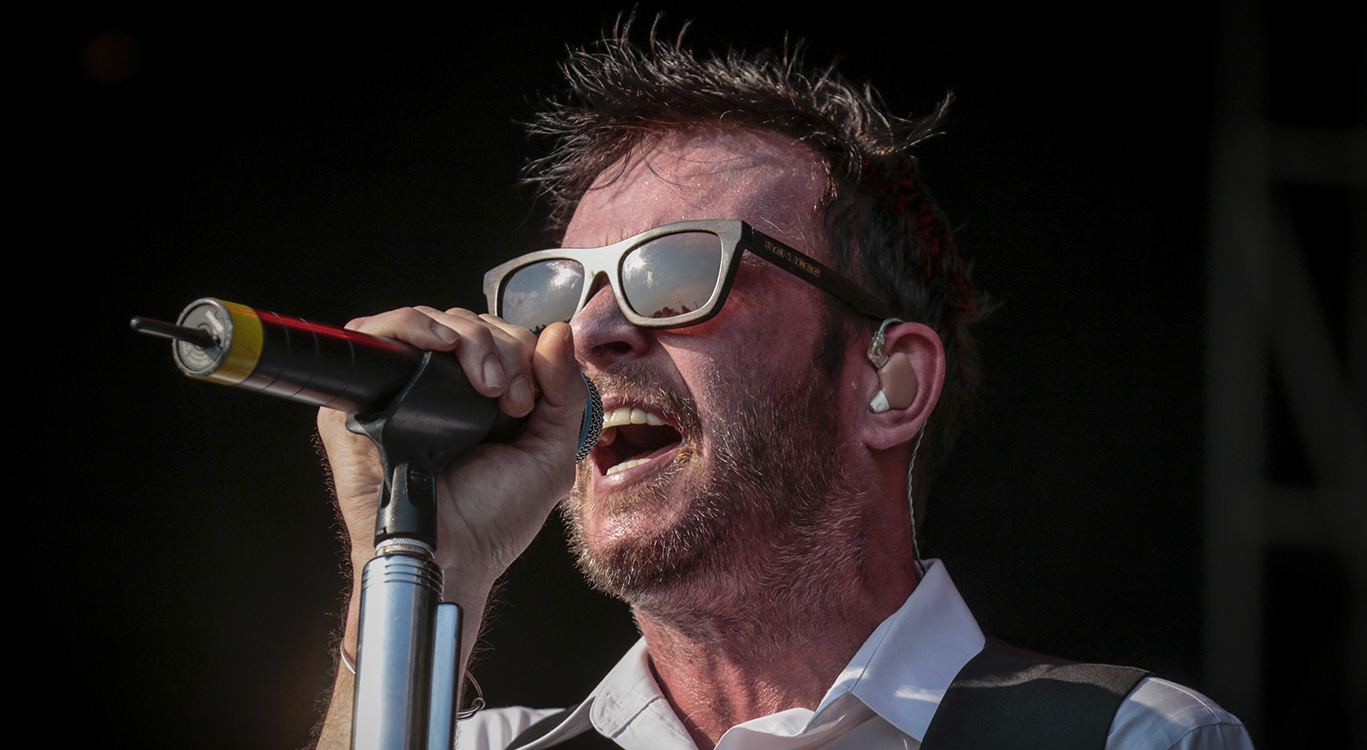
The medical examiner later determined the cause of death to be an accidental overdose. An array of drugs were found on his tour bus, including cocaine, marijuana, bipolar medication and anti-anxiety medication for treating addiction. Wildabouts bassist Tommy Black was arrested at the scene on drug charges.
Weiland was no apologist for his behaviour. Even as far back as the 90s he had admitted that he was entirely responsible for his actions and his recovery. “There’s no way you can place the blame on anyone but yourself, although, because I am a drug addict, I don’t believe I have control over what I do when I start using it, because I feel totally powerless,” he said. “But I’m still accountable for what happens.”
A few days after his death, Weiland’s second wife, Mary Forsberg, wrote a jagged open letter to Rolling Stone magazine. “Noah and Lucy never sought perfection from their dad,” she wrote. “They just kept hoping for a little effort. If you’re a parent not giving your best effort, all anyone asks is that you try just a little harder and don’t give up.”
Her comments underscore the heartbreaking truth: that among the singer’s family, friends and bandmates, in the end it seemed that the one who cared least about Scott Weiland’s sobriety was the man who needed it most.
